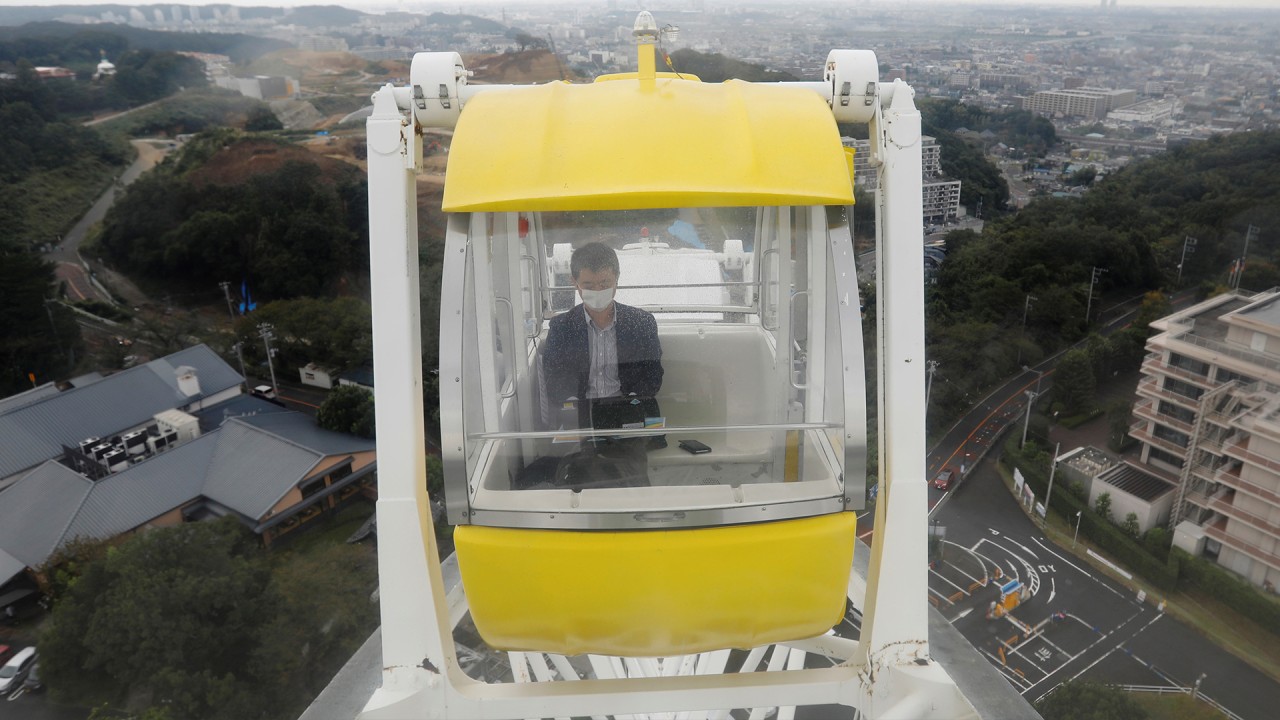Opinion | Working from home a low-cost solution to two of China’s biggest problems: low birth rate and high pollution
- The Chinese government has been at pains to increase fertility and reduce pollution
- Raising children in urban China is prohibitively expensive. Telecommuting is a low-cost strategy to address China’s demographic and environmental challenges

Before the pandemic, firms and workers around the world used emails and conference calls to reduce communication costs. But a lack of coordination made it difficult to use these technologies fully.
Firing off an email was easy, but there was no guarantee of when the other person would respond. People were reluctant to break old habits. More broadly, low demand discouraged product development, leaving much to be desired in many workplace apps.

01:24
Japanese theme park opens Ferris wheel for remote workers during coronavirus pandemic
This makes sense: companies lower their real-estate overheads, and employees gain more flexibility in their work schedules and choice of where to live. Moreover, fewer commuters imply less air pollution and urban congestion.
By contrast, in China, many sectors have been able to function relatively normally over the past year. As a result, there has been neither a wholesale shift to virtual work nor much discussion of new workplace models for the post-pandemic era. China risks foregoing benefits to its economy.
For example, virtual technologies can reduce the cost of living for many workers. Raising children in urban China is prohibitively expensive.
In Shanghai, residential real estate costs US$1,453 per square foot in the city centre, on average, but the average annual wage income for a full-time employee is only around US$12,000.
